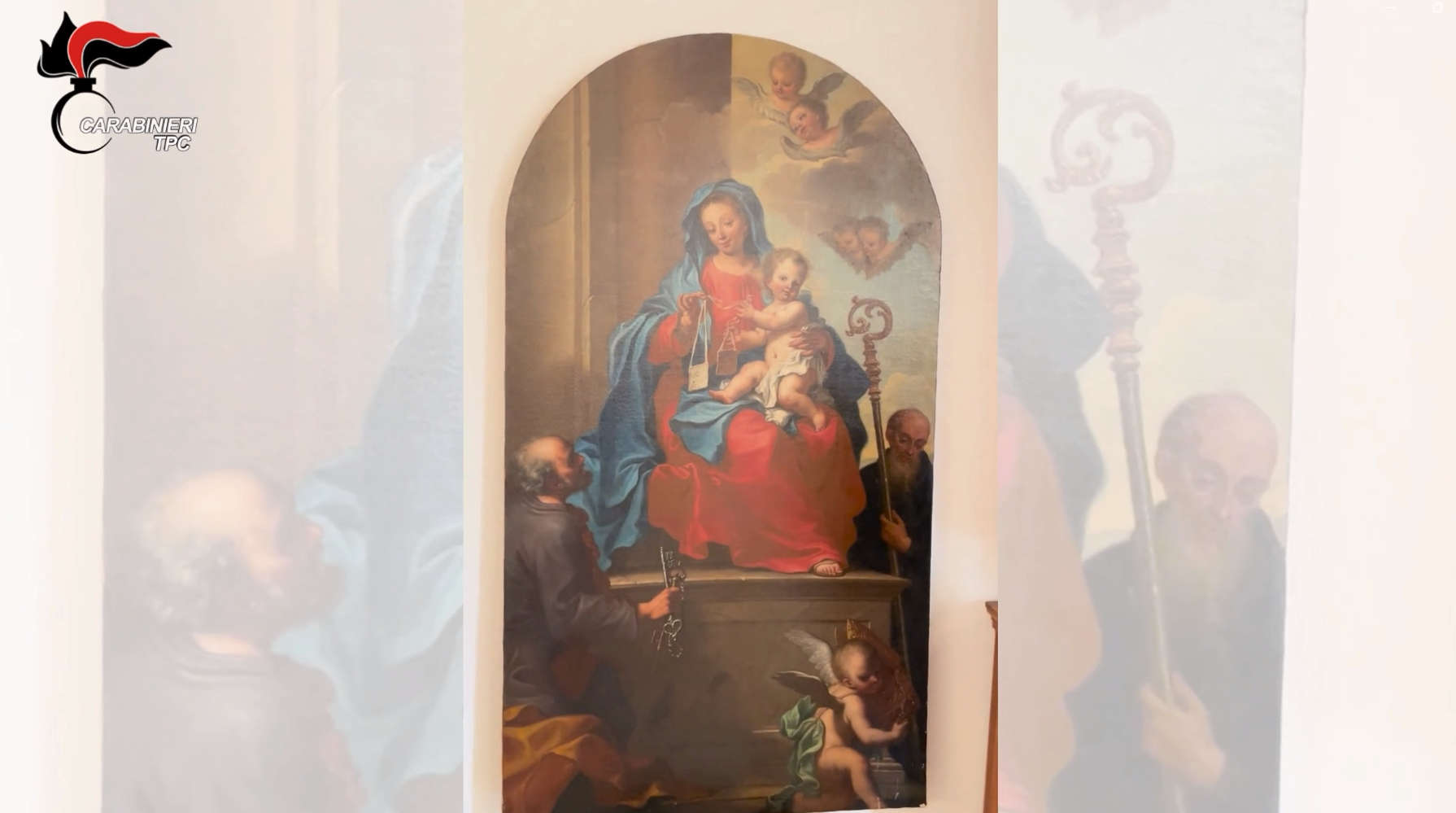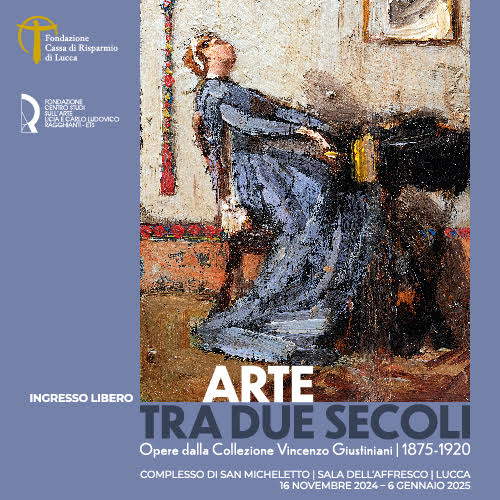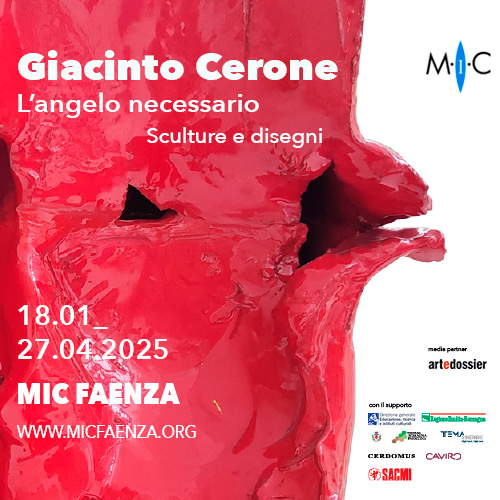Treviso, an altarpiece stolen 48 years ago from its church found and returned
Significant restitution by the Carabinieri Tutela Patrimonio Culturale (TPC) unit of Venice, which, at the church of San Francesco in Treviso, officially returned to the bishop the altarpiece with Our Lady of Mount Carmel by Bartolomeo Litterini (Venice, 1669 - 1748), stolen in 1976 from the small church of Our Lady of Carmel attached to the Villa Marini-Albrizz-Rubelli in San Zenone degli Ezzelini (Treviso). The work, dated 1725, returns to the San Zenone community after nearly half a century, thanks to an investigation conducted with skill and dedication.
The “Madonna of Carmel,” an oil on canvas measuring 176 x 96 cm, had been stolen Nov. 20, 1976, from the small church of the same name. The painting, which depicts Our Lady with Baby Jesus in her arms between two saints, was highly revered by the local community for its deep devotional value. The then pastor of the church, realizing the importance of documenting the artistic heritage, had previously photographed the work in its original location. This detail turned out to be crucial: the photograph, handed over to the Carabinieri along with the report of the theft, was acquired in the Data Bank of Illicitly Stolen Cultural Property, the largest computerized archive managed by the Carabinieri TPC Command. After the theft, the San Zenone community decided to fill the void left by the altarpiece with a faithful copy of the work. A local artist created this reproduction, which for decades filled the symbolic and liturgical role of the original canvas.

The find: an investigation between Veneto and Rome
In the course of monitoring the antiques market, Carabinieri from the Venice TPC Unit spotted the altarpiece for sale at an antiques store in Padua. Verification through the TPC Data Bank immediately revealed a perfect match between the work for sale and the one stolen in 1976. Investigations determined that the Padua shopkeeper had duly registered the painting in the P.S. Registry, as required by the T.U.L.P.S. (Testo Unico delle Leggi di Pubblica Sicurezza). However, the work was no longer in his possession, as it had already been sold.
Thanks to the collaboration with the Public Prosecutor’s Office of Padua, it was possible to reconstruct the path of the altarpiece, tracing it back to the private citizen who had received it by hereditary bequest and who turned out to be uninvolved in the criminal acts. The subsequent location of the painting in Rome allowed the Carabinieri TPC to seize it, with the operational support of the Roman Nucleo.
Once recovered, the canvas was submitted to the examination of a technical officer of the Soprintendenza Archeologia Belle Arti e Paesaggio for Venice, Belluno, Padua, and Treviso. Analysis confirmed the authenticity of the work and its correspondence with the stolen one. Over time, the altarpiece underwent an undocumented restoration that involved re-lining and repainting, but the iconographic and stylistic details made it possible to attribute it without doubt to the painter Bartolomeo Litterini, an exponent of Venetian Baroque.
The “Madonna del Carmelo” is among the assets listed in Article 10 of the Code of Cultural Heritage and Landscape, since it is a work of historical and artistic interest belonging to an ecclesiastical body. The legislation provides for its inalienability and, consequently, its return to its rightful owner, in this case the Diocese of Treviso. The recovery of Litterini’s altarpiece is another example of the commitment of the Venice Carabinieri TPC Unit in the protection of cultural heritage. The investigative activity is based on continuous monitoring of the antiquarian market, analysis of reports and collaboration with scholars, enthusiasts and the structures of the Ministry of Culture.
The return of “Our Lady of Mount Carmel” to its original home represents a victory not only for justice, but also for the historical memory and sense of identity of the local community. Works like this, in addition to their artistic value, are closely linked to the history and spirituality of an area. Thanks to the joint work of institutions and law enforcement agencies, the painting can once again be admired in its original context, testifying to the importance of preserving and enhancing cultural heritage as an integral part of the collective heritage.
 |
| Treviso, an altarpiece stolen 48 years ago from its church found and returned |
Warning: the translation into English of the original Italian article was created using automatic tools. We undertake to review all articles, but we do not guarantee the total absence of inaccuracies in the translation due to the program. You can find the original by clicking on the ITA button. If you find any mistake,please contact us.





























